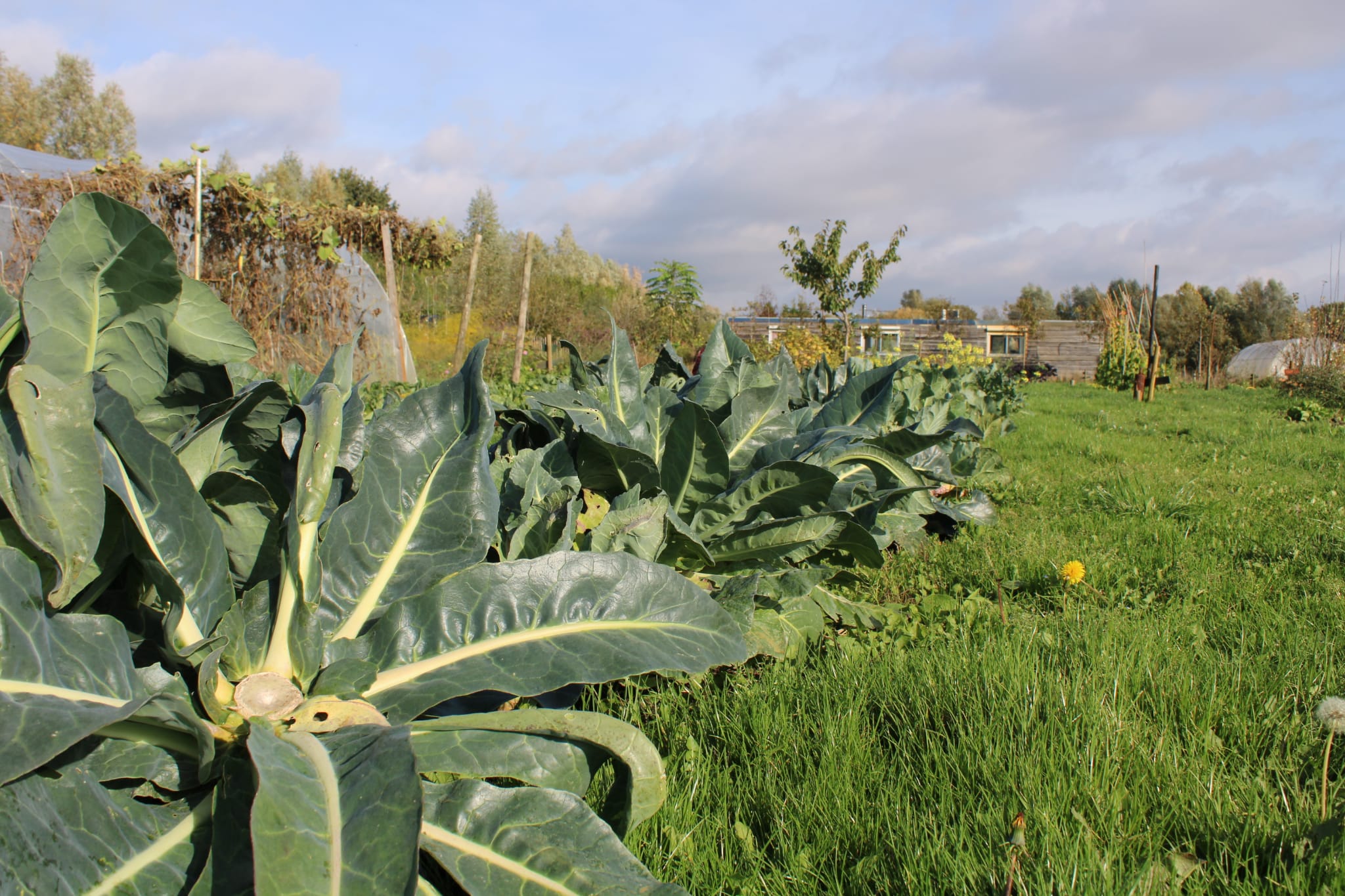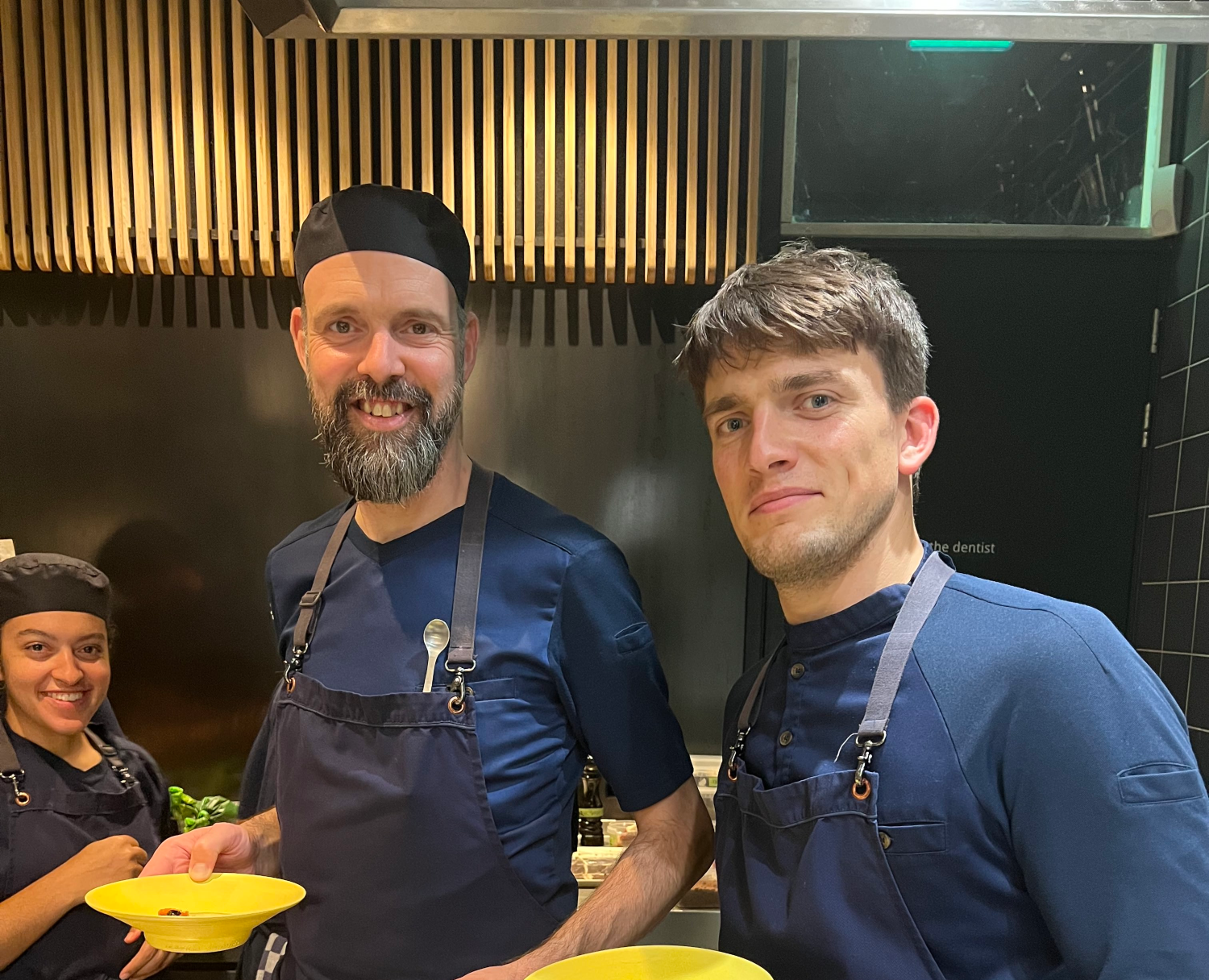Text Youssef el Khattabi
The Droevendaal food forest celebrated its five-year anniversary a week ago with lectures, excursions and tastings. Student editor Youssef el Khattabi took a look.
The rain comes down in sheets upon arrival in the food forest, and the visitors’ shoes sink into the wet soil. The food forest is a lot larger than it appears. What looks like a small strip of land along the provincial road feels like an extensive forest when you are in the middle of it. It is green all around. Various shades of green; nature flourishes.
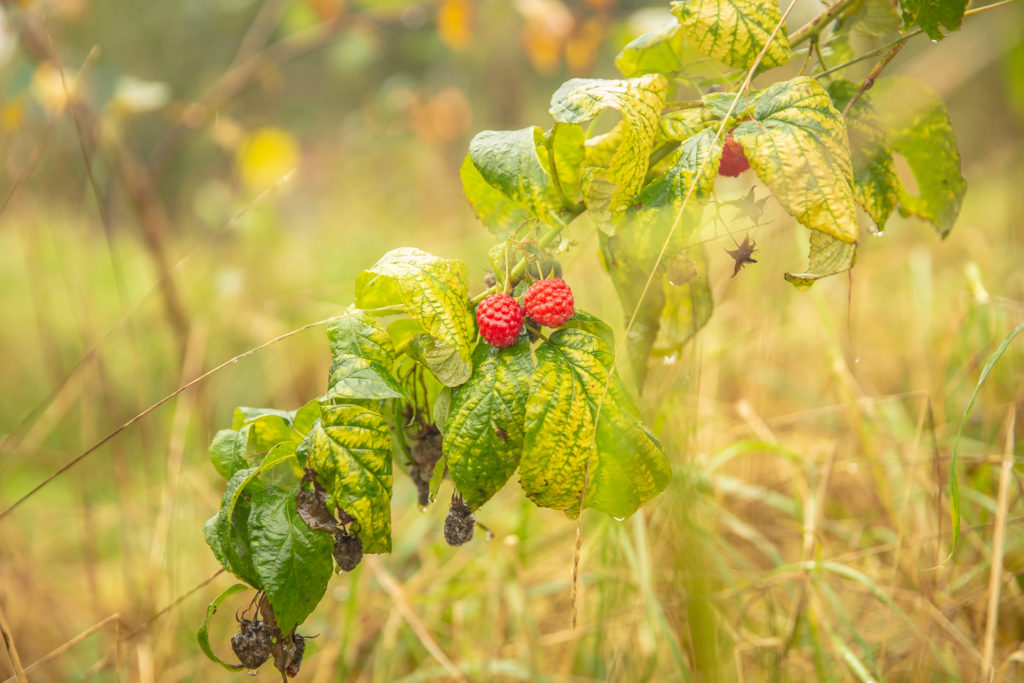
A group of visitors is guided through the forest by a lecturer in Organic Agriculture and Permaculture, Kees van Veluw. During the summer months, from June to August, the forest offers an abundance of fruit, but even now, there is fruit to be found. He points out the raspberries that peek through the foliage, glistening in the rain. Visitors pick and eat them. There is more food to be had. Someone grabs a hogweed and tastes it. ‘It has a fresh flavour’, he states. Someone else inquires whether there are mushrooms. ‘There are plans to grow mushrooms’, Van Veluw reveals. He points out a prune tree and says: ‘Everything that blooms over three metres high is for the birds. The rest is ours.’
Climbing
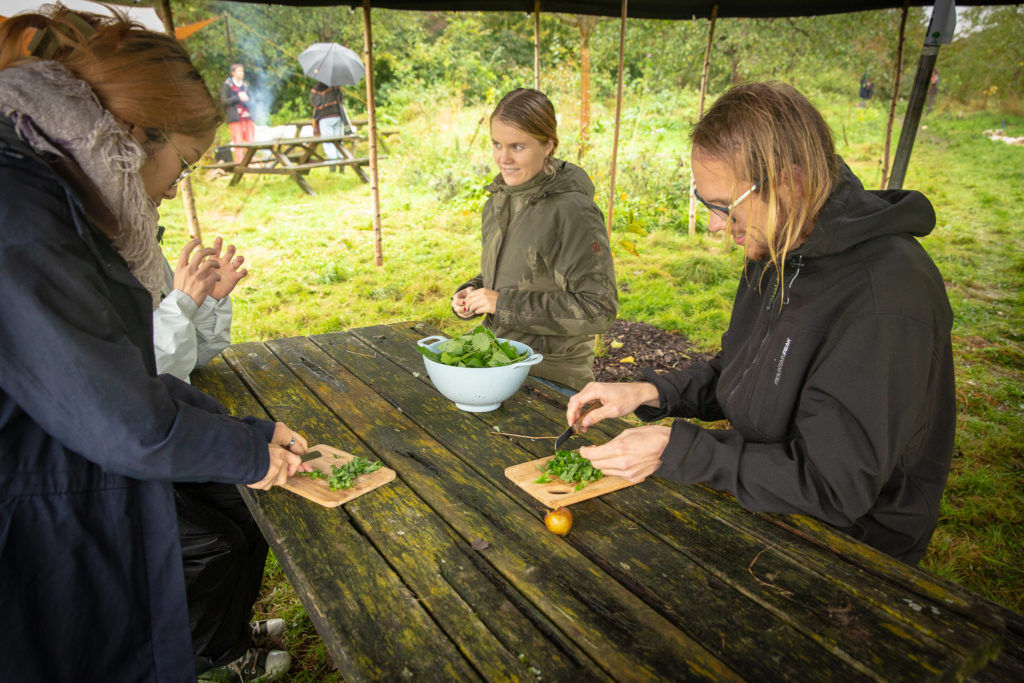
Along the route, Van Veluw talks about primary school kids who regularly visit the food forest. ‘It’s a fabulous sight’, he says with enthusiasm. ‘They have so much fun discovering this forest. For example, one of the children has a special connection with a tall tree. He climbs it, sits on a branch and tells us what he sees.’
The lecturer points out an old, fragile apple tree. ‘This tree too has its place within the ecosystem’, he explains. Despite being all but dead, it offers sanctuary to insects, fungi and other organisms. The rotting wood nourishes the soil and offers room for new life. ‘Each element in this forest, living, dying or dead, contributes to the forest as a whole.’
Each element in this forest, living, dying or dead, contributes to the forest as a whole
Kees van Veluw, lecturer Organic Agriculture and Permaculture
The group has a joint lunch after the excursion. While everyone enjoys freshly baked bread and a hearty soup, a master’s student in Environmental Sciences, Anna den Hartog and Lorenzo Honer, a master’s student in Biology, join the group. The two students are involved in the food forest project. Den Hartog made a film about it. ‘The film shows the forest’s beauty and value’, she says proudly. ‘I hope it contributes to making the forest known because many students in Wageningen don’t know about it, while it is so close to the campus and can contribute so much to agricultural solutions. I myself only learned about it near the end of my studies.’
Cooking
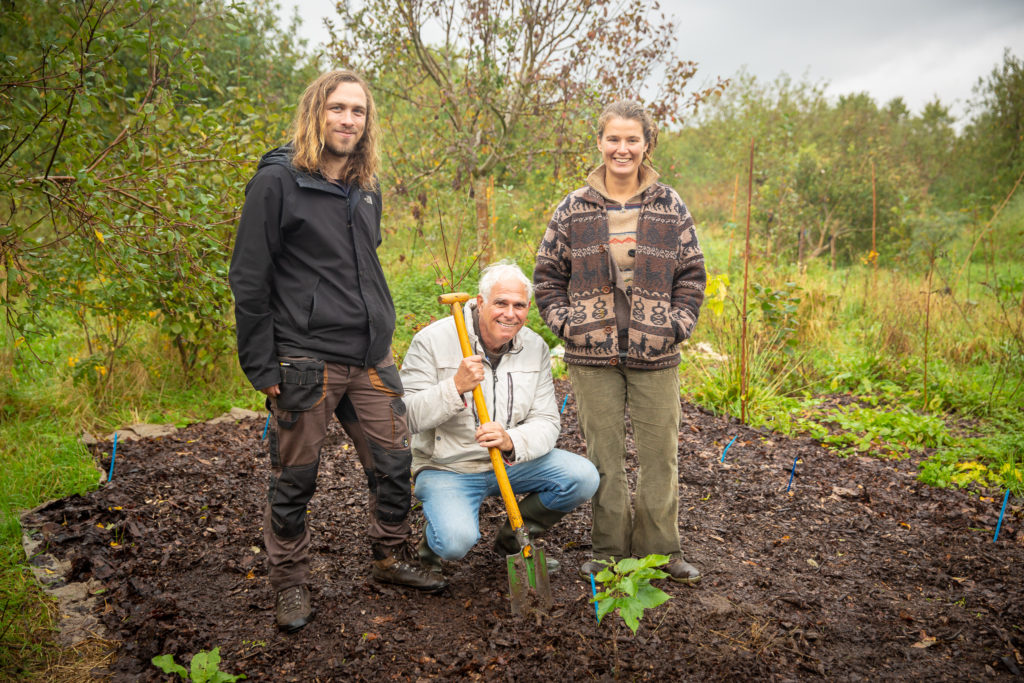
Lorenzo Honer, who conducted research on the forest’s biodiversity, shares his insights next to the poster he made. ‘The forest now harbours 143 different wild plant species, a lot more than previously.’ This number reflects the value of food forests for the future, he says, adding: ‘Cooking with wild plants from the forest is a culinary adventure.’
Van Veluw: ‘We harvest apples, berries, wild vegetables and some nuts and acorns. But starting a food forest requires patience; it takes some ten years for trees to produce a decent harvest. But, if the forest is well-designed, they continue to do so for a century without needing much care. That is the power of nature and what we have learned in the last five years. All of the experiences and insights we gained here will be used in five pilots with landowners and young food forest entrepreneurs. Droevendaal is our living lab, and students are invited to come work in the forest or help design and monitor the pilots.’

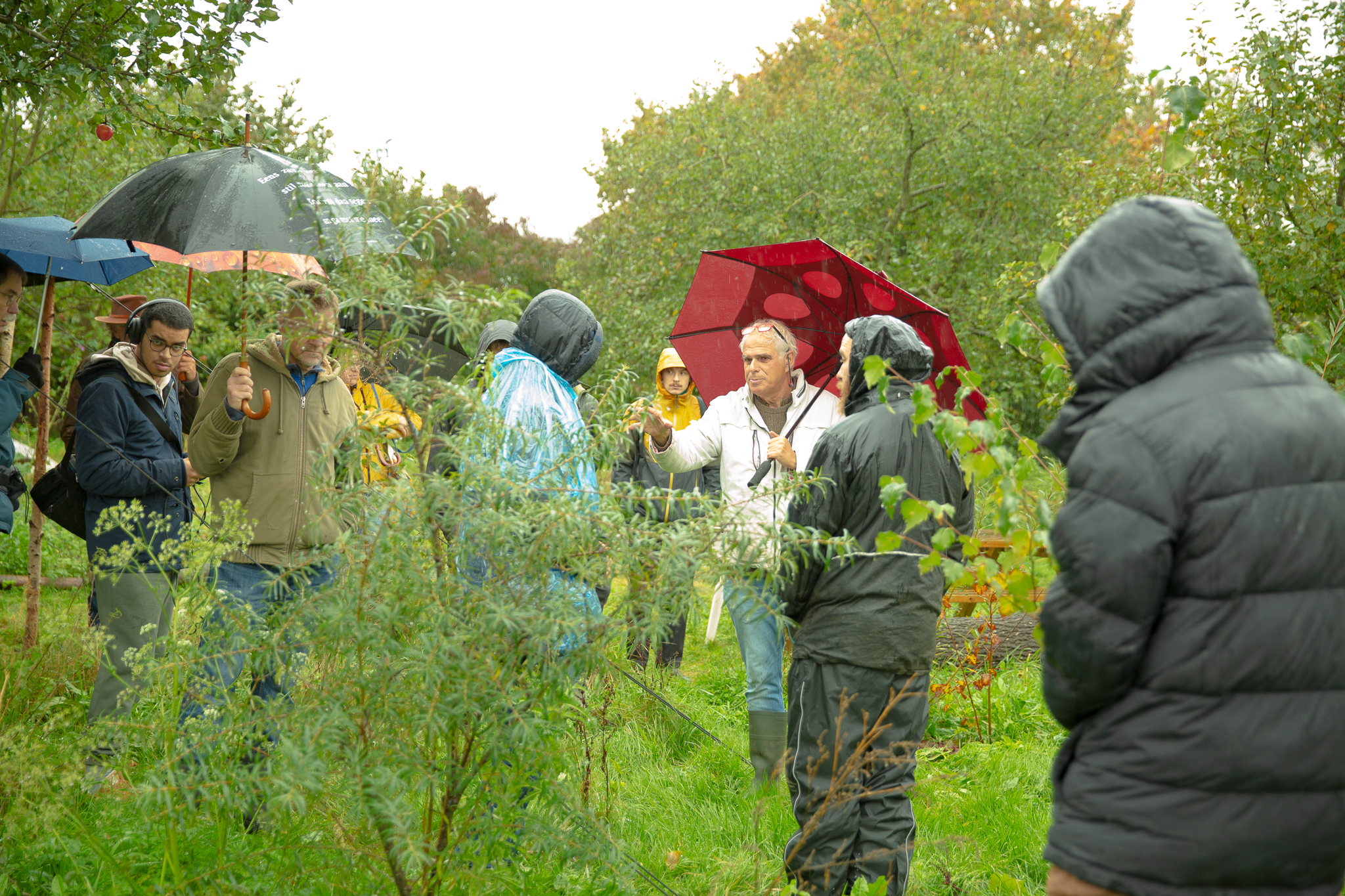 Lecturer Kees van Veluw facilitates a guided food forest tour during its first rainy lustrum. Photo Anna den Hartog
Lecturer Kees van Veluw facilitates a guided food forest tour during its first rainy lustrum. Photo Anna den Hartog 
